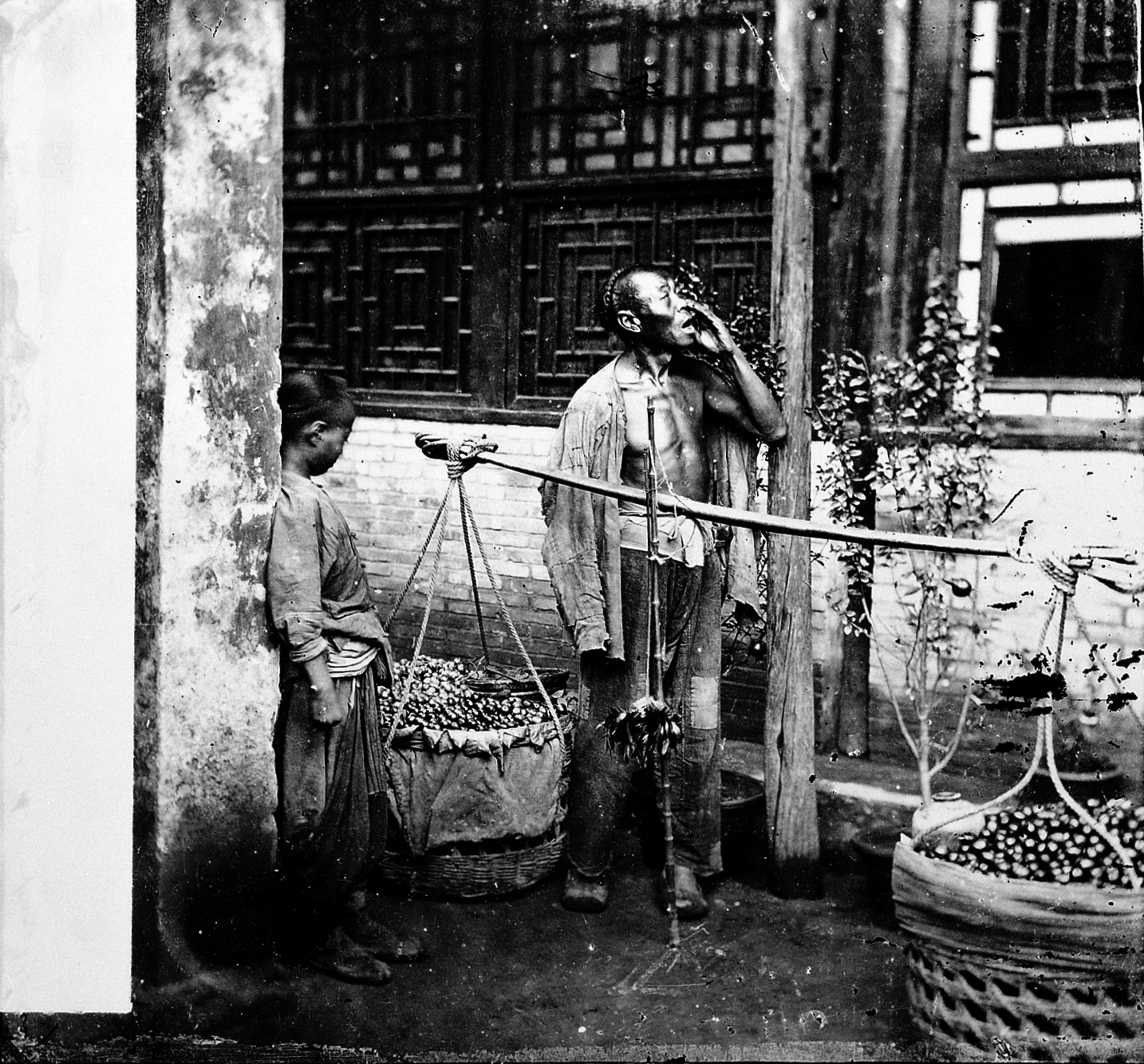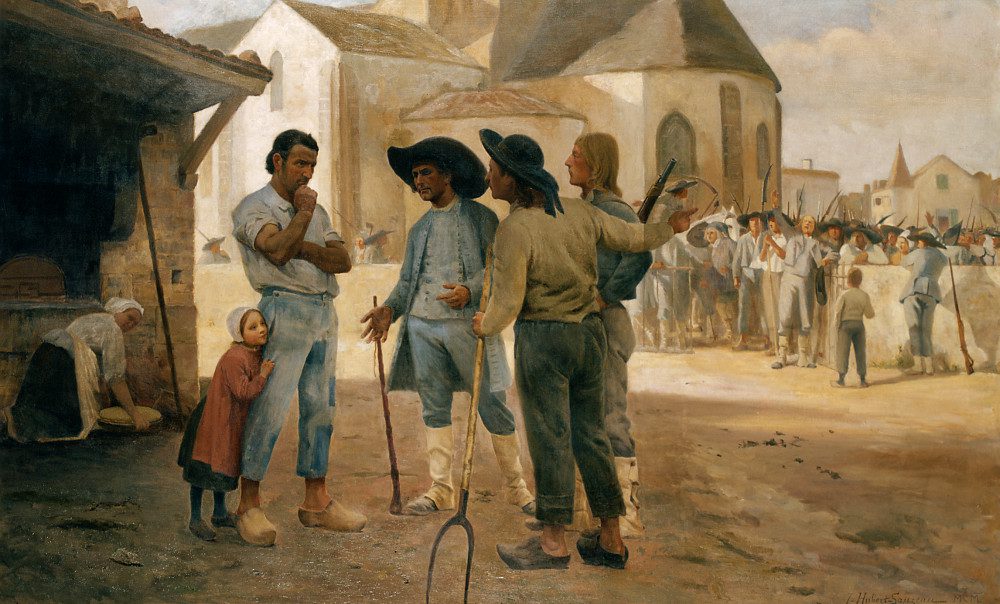|
Jacques Cathelineau
Generalissimo Jacques Cathelineau (5 January 1759 – 14 July 1793) was a French Vendéan insurrectionist leader during the Revolution. He was known among his followers as the Saint of Anjou. He was a well known peddler in Anjou. When the Kingdom of France was abolished and the French First Republic was established, the revolutionaries committed atrocities against the civilians of the Vendée during the Reign of Terror. Cathelineau rallied an army of peasants loyal to the monarchy and the Church and waged an uprising against the revolutionaries, capturing several villages and castles, leading more volunteers to follow him. As the War in the Vendée grew in success, Cathelineau joined forces with other counterrevolutionary leaders and was made ''generalissimo'' of the Catholic and Royal Army. He inspired his troops by fighting alongside them on the front lines, which proved to be his downfall. In the summer of 1793, while he and his men were storming the city of Nantes, Cathe ... [...More Info...] [...Related Items...] OR: [Wikipedia] [Google] [Baidu] |
Anne-Louis Girodet-Trioson
Anne-Louis Girodet de Roussy-Trioson (or ''de Roucy''), also known as Anne-Louis Girodet-Trioson or simply Girodet (29 January 17679 December 1824),Long, George. (1851) ''The Supplement to the Penny Cyclopædia of the Society for the Diffusion of Useful Knowledge'', C. Knight. was a French painter and pupil of Jacques-Louis David, who participated in the early Romantic movement by including elements of eroticism in his paintings. Girodet is remembered for his precise and clear style and for his paintings of members of the Napoleonic family. Early career Girodet was born at Montargis. Both of his parents died when he was a young adult. The care of his inheritance and education fell to his guardian, a prominent physician named Benoît-François Trioson, "''médecin-de-mesdames''", who later adopted him. The two men remained close throughout their lives and Girodet took the surname Trioson in 1812. In school he first studied architecture and pursued a military career.Polet, Jean-Cl ... [...More Info...] [...Related Items...] OR: [Wikipedia] [Google] [Baidu] |
Reign Of Terror
The Reign of Terror (french: link=no, la Terreur) was a period of the French Revolution when, following the creation of the First Republic, a series of massacres and numerous public executions took place in response to revolutionary fervour, anticlerical sentiment, and accusations of treason by the Committee of Public Safety. There is disagreement among historians over when exactly "the Terror" began. Some consider it to have begun only in 1793, giving the date as either 5 September, June or March, when the Revolutionary Tribunal came into existence. Others, however, cite the earlier time of the September Massacres in 1792, or even July 1789, when the first killing of the revolution occurred. The term "Terror" being used to describe the period was introduced by the Thermidorian Reaction who took power after the fall of Maximilien Robespierre in July 1794, to discredit Robespierre and justify their actions. Today there is consensus amongst historians that the exceptional revo ... [...More Info...] [...Related Items...] OR: [Wikipedia] [Google] [Baidu] |
First French Republic
In the history of France, the First Republic (french: Première République), sometimes referred to in historiography as Revolutionary France, and officially the French Republic (french: République française), was founded on 21 September 1792 during the French Revolution. The First Republic lasted until the declaration of the First Empire on 18 May 1804 under Napoléon Bonaparte, although the form of the government changed several times. This period was characterized by the fall of the monarchy, the establishment of the National Convention and the Reign of Terror, the Thermidorian Reaction and the founding of the Directory, and, finally, the creation of the Consulate and Napoleon's rise to power. End of the monarchy in France Under the Legislative Assembly, which was in power before the proclamation of the First Republic, France was engaged in war with Prussia and Austria. In July 1792, the Duke of Brunswick, commanding general of the Austro–Prussian Army, issued his Bru ... [...More Info...] [...Related Items...] OR: [Wikipedia] [Google] [Baidu] |
Louis XVI Of France
Louis XVI (''Louis-Auguste''; ; 23 August 175421 January 1793) was the last King of France before the fall of the monarchy during the French Revolution. He was referred to as ''Citizen Louis Capet'' during the four months just before he was executed by guillotine. He was the son of Louis, Dauphin of France, son and heir-apparent of King Louis XV, and Maria Josepha of Saxony. When his father died in 1765, he became the new Dauphin. Upon his grandfather's death on 10 May 1774, he became King of France and Navarre, reigning as such until 4 September 1791, when he received the title of King of the French, continuing to reign as such until the monarchy was abolished on 21 September 1792. The first part of his reign was marked by attempts to reform the French government in accordance with Enlightenment ideas. These included efforts to abolish serfdom, remove the ''taille'' (land tax) and the ''corvée'' (labour tax), and increase tolerance toward non-Catholics as well as abolis ... [...More Info...] [...Related Items...] OR: [Wikipedia] [Google] [Baidu] |
Conscription
Conscription (also called the draft in the United States) is the state-mandated enlistment of people in a national service, mainly a military service. Conscription dates back to antiquity and it continues in some countries to the present day under various names. The modern system of near-universal national conscription for young men dates to the French Revolution in the 1790s, where it became the basis of a very large and powerful military. Most European nations later copied the system in peacetime, so that men at a certain age would serve 1–8 years on active duty and then transfer to the reserve force. Conscription is controversial for a range of reasons, including conscientious objection to military engagements on religious or philosophical grounds; political objection, for example to service for a disliked government or unpopular war; sexism, in that historically men have been subject to the draft in the most cases; and ideological objection, for example, to a perceived vio ... [...More Info...] [...Related Items...] OR: [Wikipedia] [Google] [Baidu] |
Contraband
Contraband (from Medieval French ''contrebande'' "smuggling") refers to any item that, relating to its nature, is illegal to be possessed or sold. It is used for goods that by their nature are considered too dangerous or offensive in the eyes of the legislator—termed contraband ''in se''—and forbidden. So-called derivative contraband refers to goods that may normally be owned, but are liable to be seized because they were used in committing an unlawful act and hence begot illegally, e.g. smuggling goods; stolen goods – knowingly participating in their trade is an offense in itself, called fencing. Law of armed conflict In international law, contraband means goods that are ultimately destined for territory under the control of the enemy and may be susceptible for use in armed conflict. Traditionally, contraband is classified into two categories, absolute contraband and conditional contraband. The former category includes arms, munitions, and various materials, such a ... [...More Info...] [...Related Items...] OR: [Wikipedia] [Google] [Baidu] |
Peddler
A peddler, in British English pedlar, also known as a chapman, packman, cheapjack, hawker, higler, huckster, (coster)monger, colporteur or solicitor, is a door-to-door and/or travelling vendor of goods. In England, the term was mostly used for travellers hawking goods in the countryside to small towns and villages. In London, more specific terms were used, such as costermonger. From antiquity, peddlers filled the gaps in the formal market economy by providing consumers with the convenience of door-to-door service. They operated alongside town markets and fairs where they often purchased surplus stocks which were subsequently resold to consumers. Peddlers were able to distribute goods to the more geographically-isolated communities such as those who lived in mountainous regions of Europe. They also called on consumers who, for whatever reason, found it difficult to attend town markets. Thus, peddlers played an important role in linking these consumers and regions to wider trade ... [...More Info...] [...Related Items...] OR: [Wikipedia] [Google] [Baidu] |
Maine-et-Loire
Maine-et-Loire () is a department in the Loire Valley in the Pays de la Loire region in Western France. It is named after the two rivers, Maine and the Loire. It borders Mayenne and Sarthe to the north, Loire-Atlantique to the west, Indre-et-Loire to the east, Vienne and Deux-Sèvres to the south, Vendée to the south-west, and Ille-et-Vilaine to the north-west. It also borders Ille-et-Vilaine in the north for just , France's shortest department boundary. Its prefecture is Angers; its subprefectures are Cholet, Saumur and Segré-en-Anjou Bleu. Maine-et-Loire had a population of 818,273 in 2019.Populations légales 2019: 49 Maine-et-Loire INSEE History Maine-et-Loire is one of the original 83 departments created during the |
Département In France
In the administrative divisions of France, the department (french: département, ) is one of the three levels of government under the national level ("territorial collectivities"), between the administrative regions and the communes. Ninety-six departments are in metropolitan France, and five are overseas departments, which are also classified as overseas regions. Departments are further subdivided into 332 arrondissements, and these are divided into cantons. The last two levels of government have no autonomy; they are the basis of local organisation of police, fire departments and, sometimes, administration of elections. Each department is administered by an elected body called a departmental council ( ing. lur.. From 1800 to April 2015, these were called general councils ( ing. lur.. Each council has a president. Their main areas of responsibility include the management of a number of social and welfare allowances, of junior high school () buildings and technical staff, ... [...More Info...] [...Related Items...] OR: [Wikipedia] [Google] [Baidu] |
Jacques Cathelineau
Generalissimo Jacques Cathelineau (5 January 1759 – 14 July 1793) was a French Vendéan insurrectionist leader during the Revolution. He was known among his followers as the Saint of Anjou. He was a well known peddler in Anjou. When the Kingdom of France was abolished and the French First Republic was established, the revolutionaries committed atrocities against the civilians of the Vendée during the Reign of Terror. Cathelineau rallied an army of peasants loyal to the monarchy and the Church and waged an uprising against the revolutionaries, capturing several villages and castles, leading more volunteers to follow him. As the War in the Vendée grew in success, Cathelineau joined forces with other counterrevolutionary leaders and was made ''generalissimo'' of the Catholic and Royal Army. He inspired his troops by fighting alongside them on the front lines, which proved to be his downfall. In the summer of 1793, while he and his men were storming the city of Nantes, Cathe ... [...More Info...] [...Related Items...] OR: [Wikipedia] [Google] [Baidu] |
Bourbon Restoration In France
The Bourbon Restoration was the period of French history during which the House of Bourbon returned to power after the first fall of Napoleon on 3 May 1814. Briefly interrupted by the Hundred Days War in 1815, the Restoration lasted until the July Revolution of 26 July 1830. Louis XVIII and Charles X, brothers of the executed king Louis XVI, successively mounted the throne and instituted a conservative government intended to restore the proprieties, if not all the institutions, of the Ancien Régime. Exiled supporters of the monarchy returned to France but were unable to reverse most of the changes made by the French Revolution. Exhausted by decades of war, the nation experienced a period of internal and external peace, stable economic prosperity and the preliminaries of industrialization. Background Following the French Revolution (1789–1799), Napoleon Bonaparte became ruler of France. After years of expansion of his French Empire by successive military victories, a coaliti ... [...More Info...] [...Related Items...] OR: [Wikipedia] [Google] [Baidu] |






